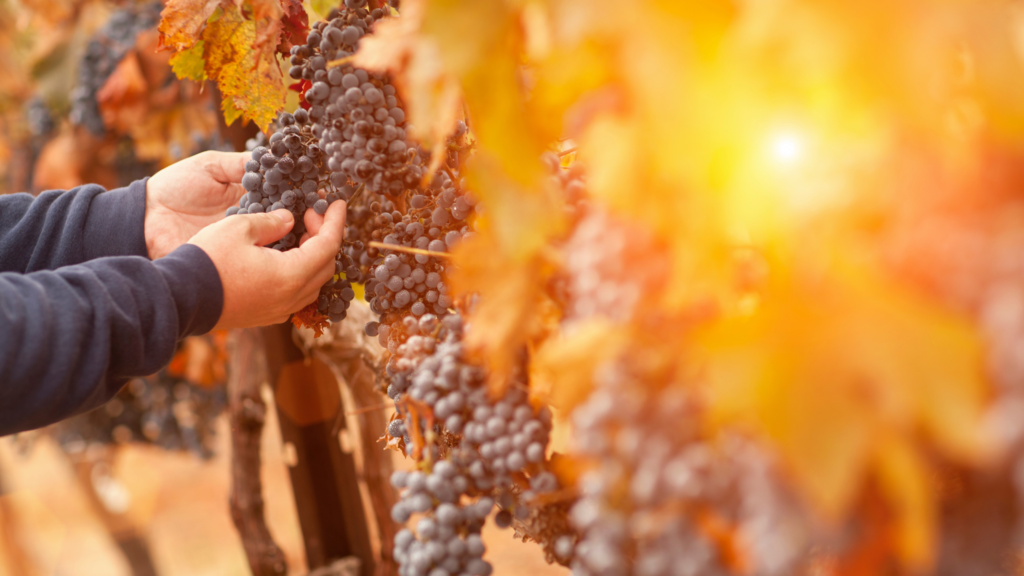Table of Contents
“Uncork the Debate: Should Yeast Info be on Wine Labels?”
The debate over whether yeast information should be included on wine labels has been ongoing for many years. While some argue that yeast information is essential for consumers to make informed decisions about the wines they purchase, others believe that it is unnecessary and could lead to confusion. In this article, we will explore both sides of the argument and discuss the potential implications of including yeast information on wine labels. We will also consider the potential benefits of including yeast information on wine labels, such as providing consumers with more information about the wines they purchase. Finally, we will look at the potential drawbacks of including yeast information on wine labels, such as the potential for confusion and the cost of implementing such a system.
The Pros and Cons of Including Yeast Information on Wine Labels

Including yeast information on wine labels can be a great way to provide consumers with more information about the wine they are purchasing. However, there are both pros and cons to including this information.
The Pros:
1. Yeast information can provide consumers with a better understanding of the wine they are buying. Knowing the type of yeast used in the fermentation process can give consumers an idea of the flavor profile of the wine, as different yeasts can produce different flavors.
2. Yeast information can also be helpful for those with allergies or dietary restrictions. Knowing the type of yeast used in the fermentation process can help those with allergies or dietary restrictions determine if the wine is safe for them to consume.
3. Yeast information can also be helpful for those who are looking to pair the wine with food. Knowing the type of yeast used in the fermentation process can help consumers determine which foods will pair best with the wine.
The Cons:
1. Including yeast information on wine labels can be confusing for consumers who are not familiar with the different types of yeast used in the fermentation process.
2. Yeast information can also be difficult to include on wine labels due to space constraints.
3. Yeast information can also be difficult to keep up to date, as winemakers may switch the type of yeast used in the fermentation process from one vintage to the next.
Overall, including yeast information on wine labels can be a great way to provide consumers with more information about the wine they are purchasing. However, there are both pros and cons to including this information, so it is important to consider all of the factors before making a decision.
Exploring the Impact of Yeast Information on Wine Labels on Consumer Choice
Are you a wine enthusiast looking to learn more about the impact of yeast information on wine labels? If so, you’ve come to the right place! Yeast is an essential component of winemaking, and understanding its role can help you make more informed decisions when selecting a bottle of wine. In this article, we’ll explore the impact of yeast information on wine labels and how it can influence consumer choice.
Yeast is a single-celled organism that plays a critical role in the fermentation process. During fermentation, yeast consumes the sugar in the grape juice and converts it into alcohol and carbon dioxide. This process is what gives wine its flavor, aroma, and body. Yeast also contributes to the color of the wine, as well as its texture and mouthfeel.
When it comes to wine labels, yeast information can be incredibly helpful for consumers. For example, if a wine label states that the wine was fermented with a specific type of yeast, it can provide insight into the flavor profile of the wine. Different types of yeast can produce different flavors, aromas, and textures. Knowing which type of yeast was used can help you determine if the wine is likely to be sweet, dry, or somewhere in between.
Yeast information can also be useful for those who are looking to avoid certain allergens. For example, some wines are fermented with a type of yeast called Saccharomyces cerevisiae, which is a common allergen. Knowing this information can help those with allergies make an informed decision about which wines to purchase.
Finally, yeast information can be helpful for those who are looking to pair their wines with food. Different types of yeast can produce different flavor profiles, and knowing which type of yeast was used can help you determine which foods will pair best with the wine.
In conclusion, yeast information on wine labels can be incredibly helpful for consumers. Knowing which type of yeast was used can provide insight into the flavor profile of the wine, help those with allergies make informed decisions, and assist with food pairing. So, the next time you’re selecting a bottle of wine, be sure to take a look at the label and see if it contains any yeast information.
How Yeast Information Could Change the Wine Industry
The wine industry could be revolutionized by the use of yeast information. Yeast is a key component in the production of wine, and understanding its behavior can help winemakers create better-tasting wines. By studying the different types of yeast and their effects on the flavor and aroma of wine, winemakers can create unique and interesting wines that appeal to a wider range of consumers.
Yeast is responsible for the fermentation process, which is what turns grape juice into wine. Different types of yeast can produce different flavors and aromas in the wine, and understanding which types of yeast are best suited for a particular type of wine can help winemakers create a unique and desirable product. For example, some yeasts are better suited for producing fruity wines, while others are better for producing dry wines. By understanding the different types of yeast and their effects on the flavor and aroma of wine, winemakers can create a product that is tailored to the tastes of their customers.
Yeast information can also help winemakers create wines that are more consistent in quality. By understanding the behavior of different types of yeast, winemakers can ensure that their wines are consistently of the same quality. This can help winemakers create a product that is more reliable and consistent, which can help them build a loyal customer base.
Finally, yeast information can help winemakers create wines that are more sustainable. By understanding the behavior of different types of yeast, winemakers can create wines that are more efficient in their use of resources. This can help winemakers reduce their environmental impact and create a more sustainable product.
Overall, yeast information can revolutionize the wine industry. By understanding the behavior of different types of yeast, winemakers can create unique and interesting wines that appeal to a wider range of consumers. They can also create wines that are more consistent in quality and more sustainable in their use of resources. All of these benefits can help winemakers create a product that is more desirable and profitable.
Examining the Regulatory Challenges of Including Yeast Information on Wine Labels
When it comes to wine labels, there are a lot of regulations that need to be followed. But what about including information about the yeast used in the winemaking process? It turns out that this is a bit of a grey area when it comes to regulations.
The main issue is that there is no clear-cut answer as to whether or not yeast information should be included on wine labels. On one hand, it could be argued that this information is important for consumers to know, as it can affect the flavor and aroma of the wine. On the other hand, it could be argued that this information is not necessary, as it is not required by any regulatory body.
The truth is that there is no definitive answer as to whether or not yeast information should be included on wine labels. It is up to individual winemakers to decide if they want to include this information or not. However, it is important to note that if a winemaker does choose to include yeast information on their labels, they must make sure that it is accurate and up-to-date.
In the end, it is up to individual winemakers to decide if they want to include yeast information on their labels. While there are no clear-cut regulations on this matter, it is important to make sure that any information included is accurate and up-to-date. This will ensure that consumers have the best possible experience when it comes to enjoying their favorite wines.
Q&A
Q: What is the purpose of including yeast information on wine labels?
A: The purpose of including yeast information on wine labels is to provide consumers with information about the type of yeast used in the production of the wine. This information can help consumers make more informed decisions about the type of wine they purchase, as different yeasts can impart different flavors and aromas to the finished product.
Q: What types of yeast are commonly used in winemaking?
A: Commonly used yeasts in winemaking include Saccharomyces cerevisiae, Saccharomyces bayanus, and Saccharomyces uvarum. Other yeasts, such as Brettanomyces, may also be used in some wines.
Q: What are the benefits of including yeast information on wine labels?
A: The benefits of including yeast information on wine labels include providing consumers with more information about the type of wine they are purchasing, allowing them to make more informed decisions. Additionally, it can help winemakers differentiate their wines from those of their competitors, as different yeasts can impart different flavors and aromas to the finished product.
Q: Are there any drawbacks to including yeast information on wine labels?
A: One potential drawback to including yeast information on wine labels is that it may be difficult for consumers to understand the significance of the yeast information without additional context. Additionally, some winemakers may be reluctant to include yeast information on their labels, as it could reveal their winemaking techniques and recipes.In conclusion, the debate over whether yeast information should be included on wine labels is a complex one. While some argue that yeast information is important for consumers to make informed decisions, others argue that it is unnecessary and could lead to confusion. Ultimately, the decision should be left up to the individual winemaker, as they are best positioned to determine what information is most important for their customers.
![]()










